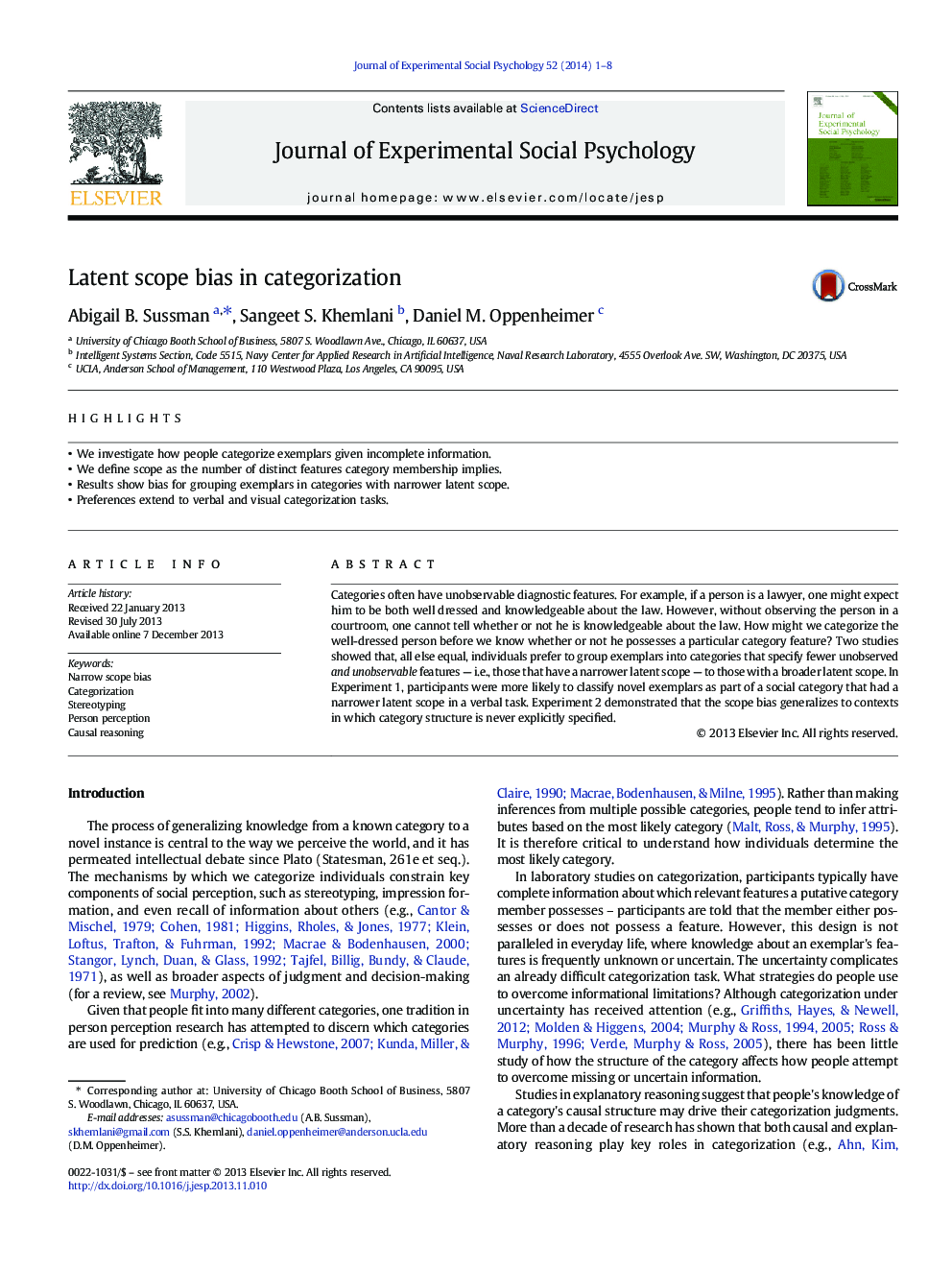| Article ID | Journal | Published Year | Pages | File Type |
|---|---|---|---|---|
| 947754 | Journal of Experimental Social Psychology | 2014 | 8 Pages |
•We investigate how people categorize exemplars given incomplete information.•We define scope as the number of distinct features category membership implies.•Results show bias for grouping exemplars in categories with narrower latent scope.•Preferences extend to verbal and visual categorization tasks.
Categories often have unobservable diagnostic features. For example, if a person is a lawyer, one might expect him to be both well dressed and knowledgeable about the law. However, without observing the person in a courtroom, one cannot tell whether or not he is knowledgeable about the law. How might we categorize the well-dressed person before we know whether or not he possesses a particular category feature? Two studies showed that, all else equal, individuals prefer to group exemplars into categories that specify fewer unobserved and unobservable features — i.e., those that have a narrower latent scope — to those with a broader latent scope. In Experiment 1, participants were more likely to classify novel exemplars as part of a social category that had a narrower latent scope in a verbal task. Experiment 2 demonstrated that the scope bias generalizes to contexts in which category structure is never explicitly specified.
